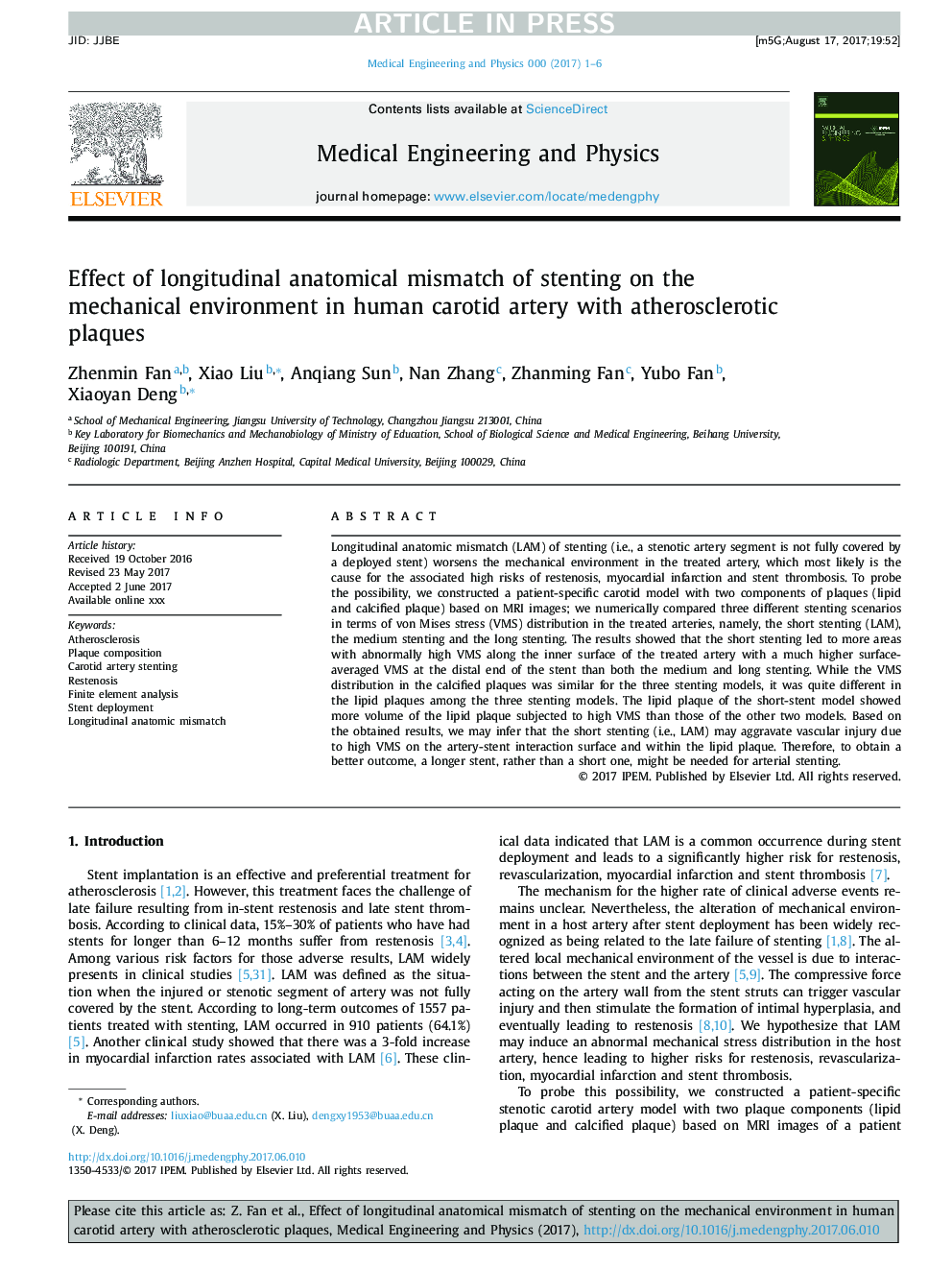| Article ID | Journal | Published Year | Pages | File Type |
|---|---|---|---|---|
| 5032598 | Medical Engineering & Physics | 2017 | 6 Pages |
Abstract
Longitudinal anatomic mismatch (LAM) of stenting (i.e., a stenotic artery segment is not fully covered by a deployed stent) worsens the mechanical environment in the treated artery, which most likely is the cause for the associated high risks of restenosis, myocardial infarction and stent thrombosis. To probe the possibility, we constructed a patient-specific carotid model with two components of plaques (lipid and calcified plaque) based on MRI images; we numerically compared three different stenting scenarios in terms of von Mises stress (VMS) distribution in the treated arteries, namely, the short stenting (LAM), the medium stenting and the long stenting. The results showed that the short stenting led to more areas with abnormally high VMS along the inner surface of the treated artery with a much higher surface-averaged VMS at the distal end of the stent than both the medium and long stenting. While the VMS distribution in the calcified plaques was similar for the three stenting models, it was quite different in the lipid plaques among the three stenting models. The lipid plaque of the short-stent model showed more volume of the lipid plaque subjected to high VMS than those of the other two models. Based on the obtained results, we may infer that the short stenting (i.e., LAM) may aggravate vascular injury due to high VMS on the artery-stent interaction surface and within the lipid plaque. Therefore, to obtain a better outcome, a longer stent, rather than a short one, might be needed for arterial stenting.
Keywords
Related Topics
Physical Sciences and Engineering
Engineering
Biomedical Engineering
Authors
Zhenmin Fan, Xiao Liu, Anqiang Sun, Nan Zhang, Zhanming Fan, Yubo Fan, Xiaoyan Deng,
